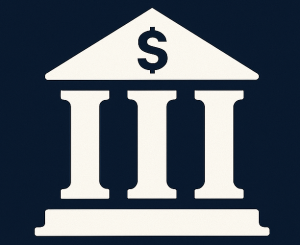NFT Lending: A Genius Idea or a Recipe for Disaster?
What Exactly IS NFT Lending, Anyway?
Okay, so, NFT lending. Honestly, when I first heard about it, I was like, “Huh?” I mean, I *sort of* understood NFTs – Non-Fungible Tokens, right? Digital collectibles, art, that kind of thing. But lending them out? It just didn’t click. It’s kind of like… lending out your prized baseball card collection. Seems weird, right? The funny thing is, it’s actually becoming a pretty big deal in the crypto world. The basic idea is this: you have an NFT, maybe a Bored Ape or a CryptoPunk (or even some random digital art), and instead of just letting it sit in your digital wallet, you can use it as collateral to borrow money. Someone else loans you crypto (usually something like ETH or stablecoins), and if you don’t pay it back, they get your NFT. Simple enough, in theory. But like, who actually wants to lend money against a JPEG? And what are the real risks here?
Why Would Anyone Borrow Against an NFT?
Alright, so you might be thinking, “Why would anyone even *do* this?” And honestly, that’s a totally fair question. I was thinking the exact same thing. The most common reason, as far as I can tell, is to get some quick liquidity without having to sell your NFT. Let’s say you believe your NFT is going to be worth a lot more in the future, but you need some cash *now*. Selling it would mean missing out on that potential future profit. So, you borrow against it instead. It’s like taking out a loan against your house, but with a digital monkey. Another reason is to leverage your NFT holdings for other investments. Maybe you want to buy more NFTs, or dip your toes into other crypto projects. Using your NFT as collateral lets you do that without having to actually sell anything. Then, some platforms will offer special rates on their lending products. Maybe if you use their token to stake, you get a better rate on borrowing against your digital art.
My First (Failed) Attempt at NFT Lending
Ugh, this reminds me of the time I tried to wrap my head around this whole DeFi thing and ended up accidentally swapping a bunch of tokens for… well, basically nothing. I stayed up until 2 a.m. reading about staking on Aave, thinking I was some kind of financial genius. Turns out, I wasn’t. I messed up the slippage settings and lost a bunch of ETH in fees. Was I the only one confused by this? That little misadventure has made me a lot more cautious about jumping into new crypto trends without doing my homework. But it also piqued my curiosity. I mean, if *I* can mess this stuff up, there must be a lot of other people out there who are also trying to figure it all out, right? That’s why I’m even writing about this stuff. To help others (and honestly, myself) not repeat my mistakes. It’s kind of therapeutic, in a weird way.
The Upsides: Why NFT Lending Could Be a Good Thing
So, let’s talk about the potential benefits. For borrowers, like we mentioned, it’s a way to unlock the value of your NFTs without selling them. It gives you access to capital that you might not otherwise have. And for lenders, it’s a way to earn interest on their crypto holdings. The returns can be pretty attractive, especially compared to traditional savings accounts. I mean, who’s getting double-digit APY at their local bank these days? Plus, it can help to increase the overall liquidity of the NFT market. More lending means more activity, which can drive up prices and make it easier to buy and sell NFTs. It’s all connected, you know? It kind of makes sense when you think about it for a second.
The Downsides: The Risks of NFT Lending
Okay, now for the scary part: the risks. And there are *definitely* risks. The biggest one is the volatility of the NFT market. I mean, one minute your NFT is worth a fortune, and the next minute it’s… well, not. If the value of your NFT drops below a certain threshold, you could get liquidated, meaning the lender gets to keep your NFT. Ouch. And remember, it’s not just about the price of the NFT itself. The value of the collateral (usually ETH) can also fluctuate wildly. So, if the price of ETH suddenly tanks, you might be forced to repay your loan early to avoid liquidation. Ugh, what a mess! Another risk is the lack of regulation in the NFT lending space. There aren’t a lot of rules in place to protect borrowers or lenders, so you’re basically on your own. And then there are the usual crypto risks, like hacks, scams, and rug pulls. Honestly, it can be a little stressful.
Understanding Loan-to-Value (LTV) and Liquidation
This is where things get a little more technical, but it’s really important to understand. LTV, or Loan-to-Value, is the ratio of the loan amount to the value of the NFT. For example, if you borrow $5,000 against an NFT that’s worth $10,000, your LTV is 50%. The higher the LTV, the riskier the loan is for the lender, and the higher the interest rate you’ll likely have to pay. Liquidation happens when the value of your NFT drops below a certain threshold, usually determined by the LTV. The lender then sells your NFT to recoup their losses. Liquidation can happen really fast, especially in a volatile market. So, it’s crucial to keep a close eye on the value of your NFT and be prepared to repay your loan early if necessary. I mean, it’s like anything else; read the fine print!
Is NFT Lending a Ticking Time Bomb?
That’s the million-dollar question, isn’t it? And honestly, I don’t know the answer for sure. It *could* be a valuable tool for unlocking liquidity and growing the NFT market. But it also has the potential to be a disaster, especially for inexperienced investors. The lack of regulation and the volatility of the market make it a very risky game. If you’re thinking about getting involved in NFT lending, either as a borrower or a lender, make sure you do your research and understand the risks. Don’t invest more than you can afford to lose. And be prepared for the possibility of getting liquidated. It’s not for the faint of heart.
Platforms for NFT Lending: A Quick Look
There are a bunch of different platforms that offer NFT lending services, each with its own pros and cons. Some popular ones include Arcade, JPEG’d, and BendDAO. Arcade is a decentralized platform that allows you to lend and borrow against a wide range of NFTs. JPEG’d focuses specifically on blue-chip NFTs like CryptoPunks and Bored Apes. BendDAO is a more centralized platform that offers instant liquidity for NFT holders. It’s really worth exploring each one of these.
The Future of NFT Lending: What to Expect
Who even knows what’s next? It’s all so new. The NFT lending market is still in its early stages, and it’s likely to evolve a lot in the coming years. We might see more regulation, more sophisticated risk management tools, and new types of NFT-backed loans. It’s also possible that the market will crash and burn, leaving a lot of investors with nothing. I’m not trying to be a downer, but it’s important to be realistic. One thing is for sure: it’s going to be an interesting ride. I’m watching this space really closely.
Final Thoughts: Should You Try NFT Lending?
So, should *you* try NFT lending? That’s a question only you can answer. It depends on your risk tolerance, your investment goals, and your understanding of the NFT market. If you’re a seasoned crypto investor with a high risk tolerance and a deep understanding of NFTs, it might be worth exploring. But if you’re new to crypto or you’re not comfortable with risk, you should probably stay away. Honestly, it feels a bit like gambling to me. And I’m not a big gambler. Either way, do your homework, be careful, and don’t invest more than you can afford to lose. And maybe learn from my DeFi disaster story first. Good luck out there!














